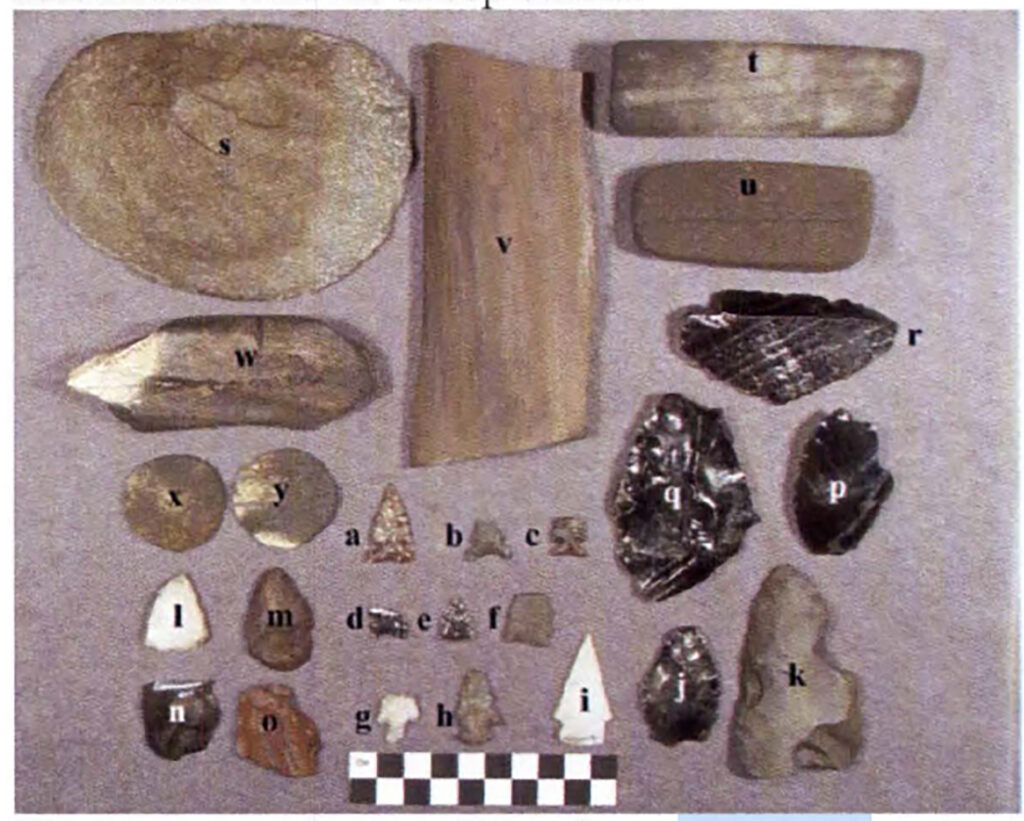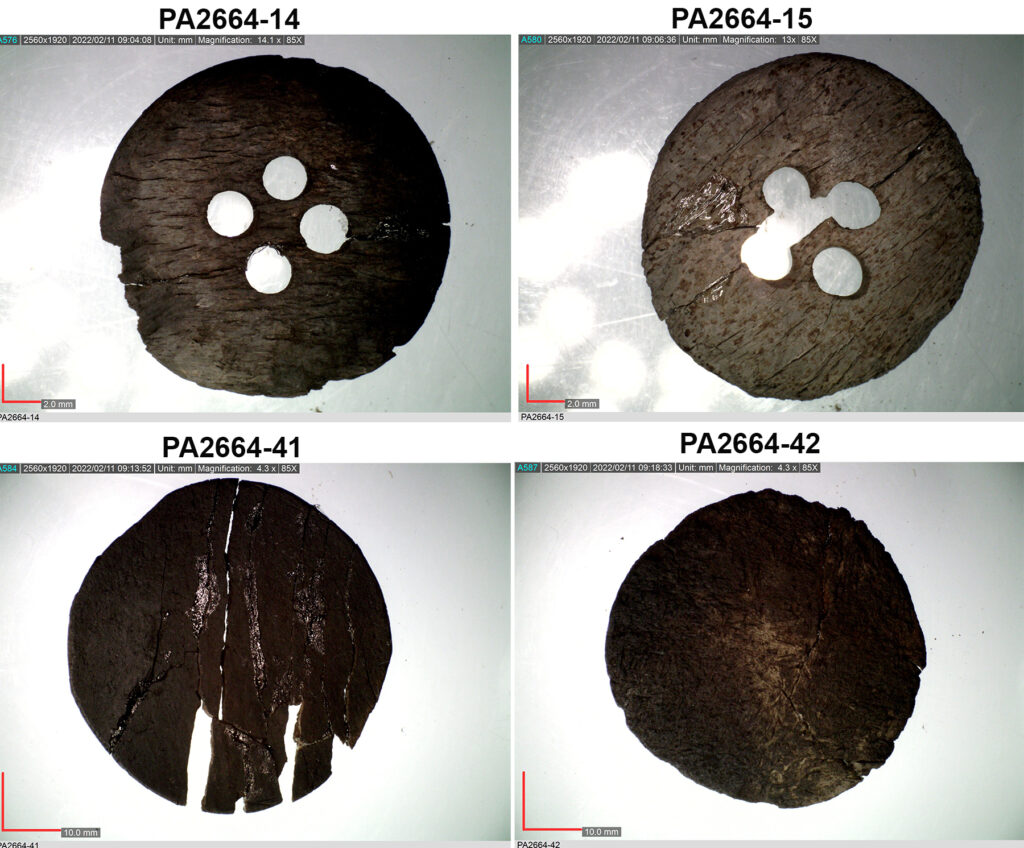48PA2664 was recorded soon after a 2003 fire burned through the area. Eakin (2005:78) describes the site as:
This site IS a 200 m x 300 m campsite/processing area situated on a hill slope adjacent to a small spring. Artifacts consist of chipped stone and bone scatters as well as multiple hearth locations. Areas of high density chipped stone were initially encountered on the site but these disappeared within the first season of exposure, probably from unauthorized artifact collection. Artifacts of note consist of tri-notched and un-notched projectile points, bifaces, scrapers and other chipped stone tools, both complete and fragmentary teshoa, shaft abraders and carved bone disks (Figure 7). One Rose Spring point and one probable Late Archaic point indicate the site was occupied prior to the most recent episode marked by the tri-notched and un-notched projectile points. No trade items were found at this site indicating that occupations may have ceased prior to the contact period. Obsidian artifacts have been sourced to several localities including Grassy Lake (n= 1 ), Obsidian Cliff (n=3) in Yellowstone Park, and the Crescent H source (n=1) in Jackson Hole.
During a 2019 site revisit, highly fragmented and weathered/deteriorated faunal remains were the most commonly encountered items on the site area. As noted above, Eakin noted that the area had likely been damaged by artifact theft after the fire, and this may well have continued with most remaining artifacts having been removed. Examination of the faunal remains exposed by the fire (which have subsequently deteriorated) is described by Eakin (2005:78):
Thousands of bone fragments littered the surface of the site. Identified species include bighorn sheep, elk, medium and large artiodactyl. Part of the faunal assemblage is comprised of eight badly burned sheep crania found in close proximity to the base of a large tree, a context suggesting they were deliberately cached. A similar pattern involving cached skulls has been described by Frison (2004: 160) from a site located on a tributary of the upper Greybull River in northwest Wyoming. The two carved bone disks were found in direct association with the sheep crania.
The “described by Frison (2004: 160) from a site located on a tributary of the upper Greybull River” was revisted in 2007 with Eakin and is now listed as 48PA3036 and does indeed seem highly comparable to 48PA2664 (but with no contact periods materials noted).

Materials in the UWAR collections from the site include items presumably collected after Eakin’s report such as four glass trade beads and two bone buttons, which indicates that the initial interpretation of the site’s occupational history is expanded to include contact period.

Bead Photos
References
Eakin, D.H. 2005. Evidence for Shoshonean Bighorn Sheep Trapping and Early Historic Occupation in The Absaroka Mountains of Northwest Wyoming. In University of Wyoming/National Park Service Research Center 29th Annual Report, edited by H.J. Harlow, and M. Harlow, pp. 74-86. University of Wyoming Graphic Arts and Publications, Laramie.
Frison, G.C. 2004. Survival by Hunting: Prehistoric Human Predators and Animal Prey. University of California Press, Berkeley.
